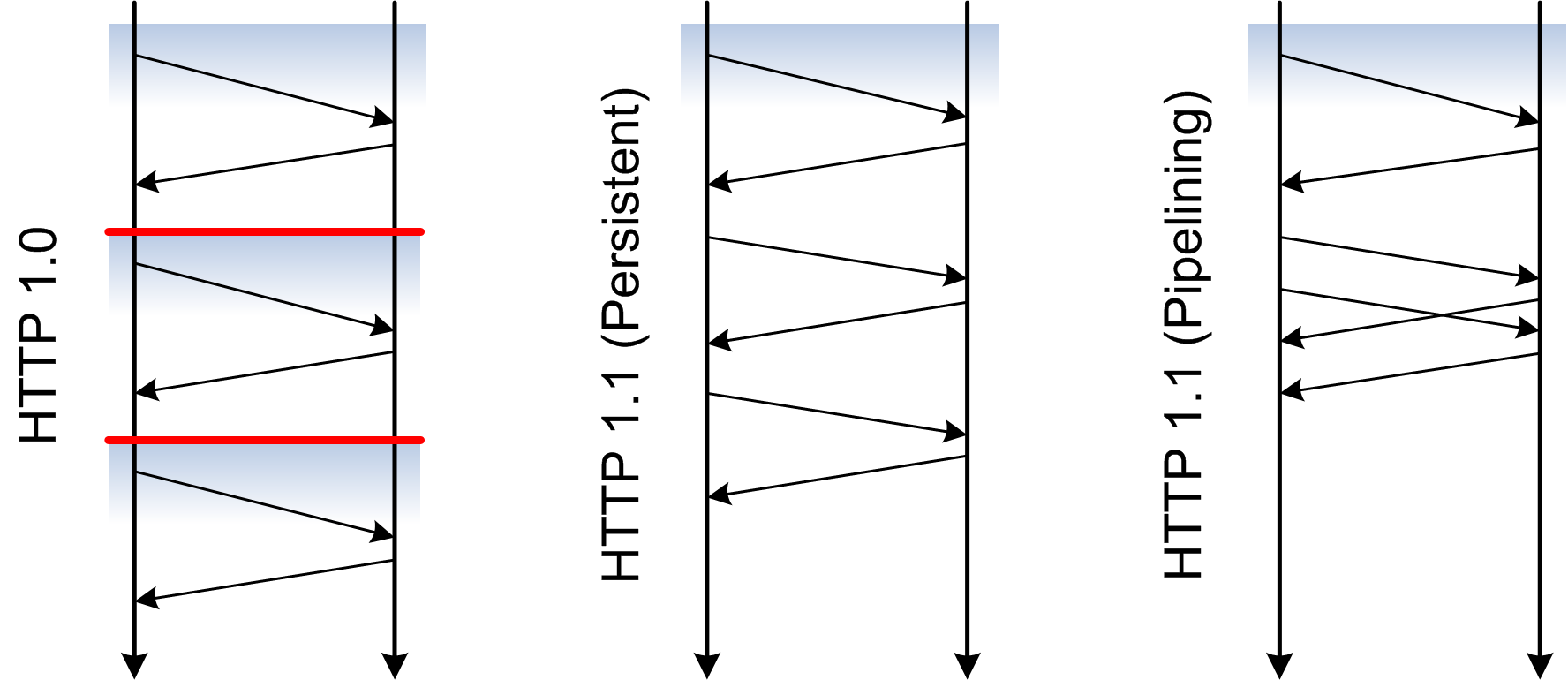(2) Abstract
The Hypertext Transfer Protocol (HTTP) is the protocol which is used for interactions with resources on
the Web (other resources can be identified by non-HTTP URIs, but they are not really on
the Web). HTTP is a TCP-based text-based stateless client/server protocol with a rather simple method for how to exchange request/reponse messages between clients and servers. HTTP has support for caching and some Web-oriented functionalities such as content negotiation and authentication.
(3) DNS & HTTP
The two basic protocols which every Web browser must implement are DNS [Internet Architecture; Domain Name System (DNS) (1)] access and HTTP []. However, most operating systems provide an API for DNS access, so the browser can use this service locally and only has to implement HTTP. TCP [Internet Architecture; Transmission Control Protocol (TCP) (1)] (which is required as the foundation for HTTP) is usually provided by the operating system.

![]() [http://creativecommons.org/licenses/by/3.0/]
[http://creativecommons.org/licenses/by/3.0/]


